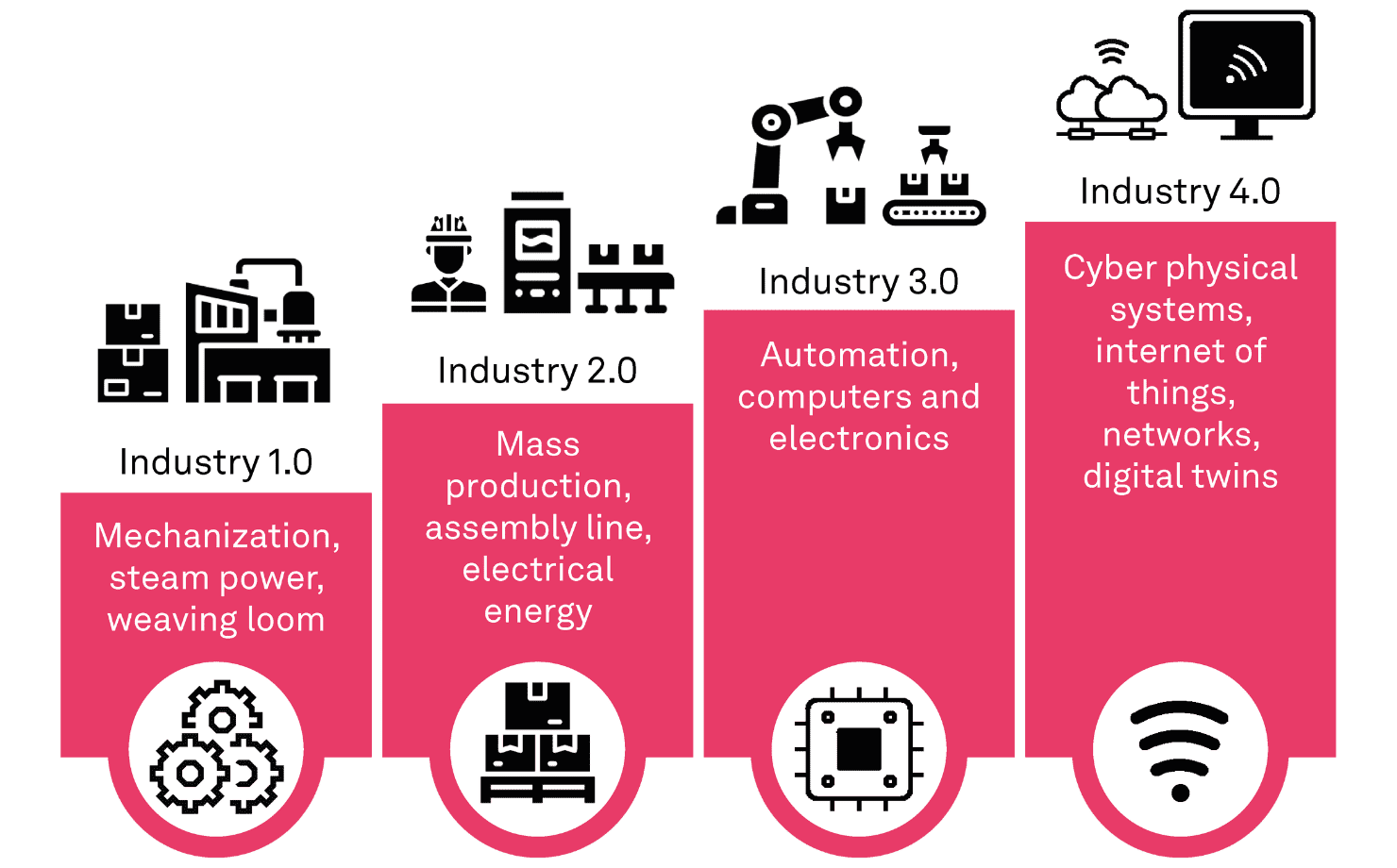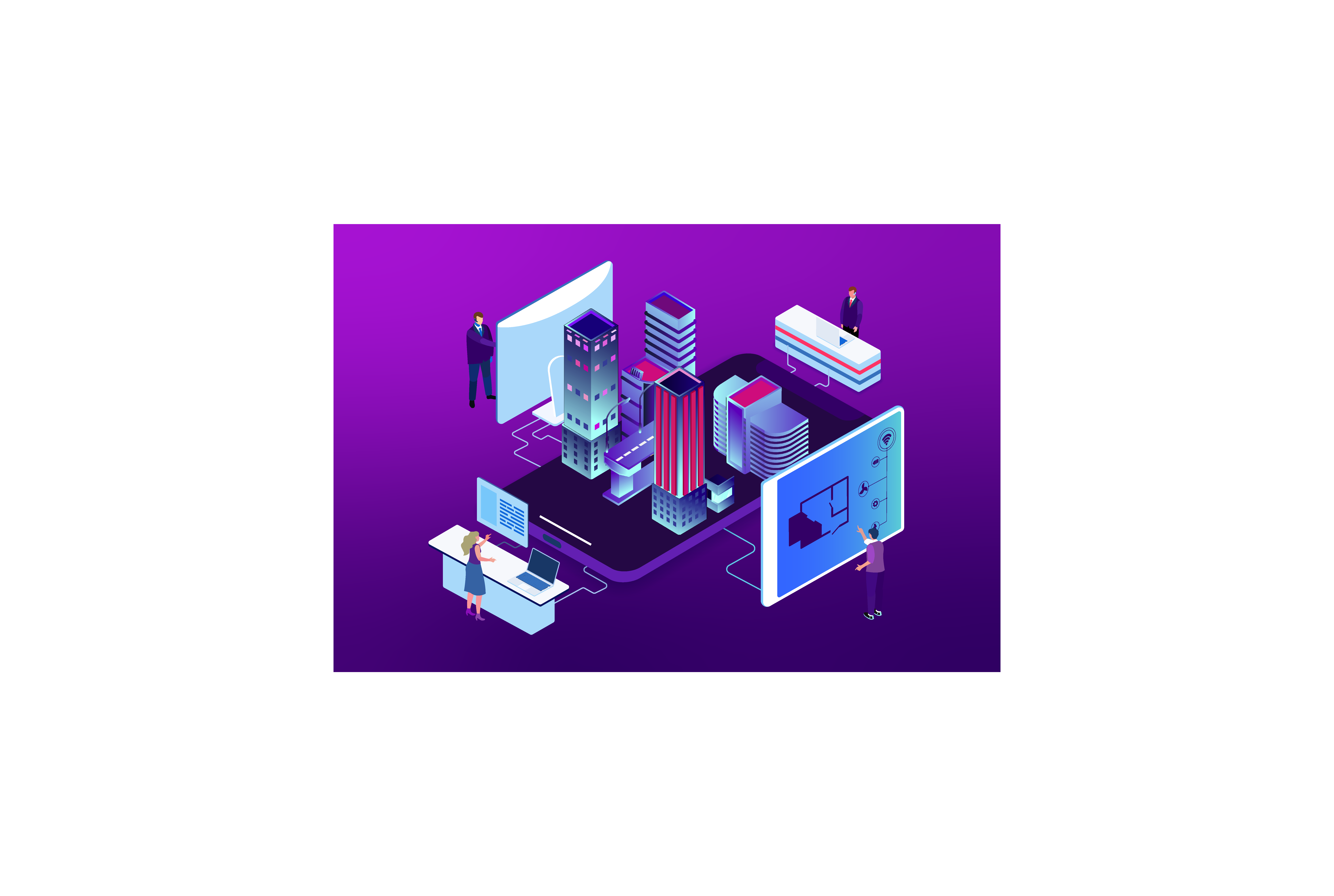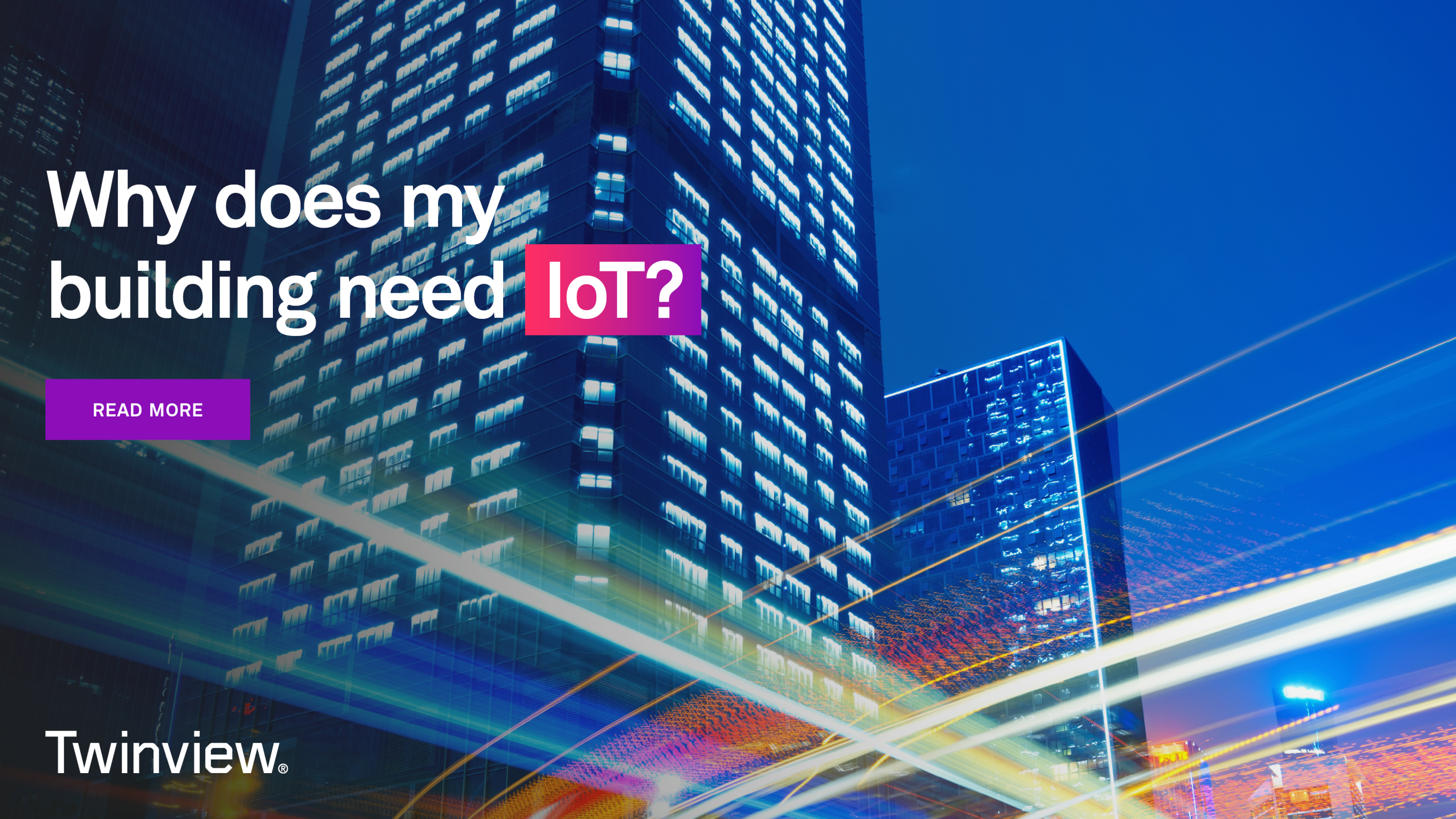18 Aug 2022 | Industry Insights
How IoT and digital twins are disrupting facilities management

Technologies continue to challenge protocols that have been around for decades. The shift to a digital world has impacted almost every industry, and now is the time for facilities management to make the leap and join the latest revolution, industry 4.0.

The increased adoption of property technology within facilities management continues to demonstrate numerous benefits and savings for businesses. Realising this, many companies are transforming their workplaces into smart buildings by integrating IoT devices and compatible software platforms that leverage data output. These combined smart technologies can drive operational efficiency and reduce expenditure and waste. They provide facilities management teams with a complete guide and comprehensive overview of the totality of their building, its assets, and its operational status and performance.
Increased Productivity
Facilities management ensures that people, places, processes, and technology, work seamlessly in conjunction with one another. It encompasses many tools and services that support the functionality, comfort, safety, and efficiency of a building. Facilities management is an ever-evolving ecosystem with expanding workloads. In the face of increasing demands, IoT devices and building software provide helpful shortcuts, insights, and automation to help facility managers remain in control and ahead. An example is when advanced infrastructures use digital twin technologies to run HVAC systems more effectively. Temperature and air quality are known to have a direct impact on productivity in the workplace. Building technology realises this through real-time asset tracking paired with integrated AI. Using stored information, AI recommends efficient solutions on a case-by-case basis, improving productivity and reducing energy expenditure.
Predictive and Preventative Maintenance
Given the variety of tasks and assets to manage daily, more and more businesses rely on technology to provide an exceptional on-site experience. Embracing smart technology can help facilities management teams to be more proactive in identifying problems before they arise. Predictive maintenance flags when an asset may require maintenance ahead of breaking down, minimising any downtime. With the help of a digital twin, the facilities team can schedule maintenance when it is both time and cost effective, ensuring the building continues to run smoothly.
Enhanced Tenant Experience
Efficient facilities management creates a safe and comfortable work environment for employees. Furthermore, it can help make people feel enthusiastic and productive about their work. In recent years, many companies have adopted hybrid working models resulting in new employee expectations and requirements. With increased pressure to boost tenant experience, facility managers must understand and communicate with occupiers. Using a digital twin linked to IoT devices, facility managers gain a deeper insight into the utilisation of each space. In addition, tenant experience apps encourage collaboration between owners, operations, and occupiers who can work together to resolve facility issues. With a built-in ticketing system, facility managers can further act, record, and keep employees up-to-date with building issues.
"In service of improving both employee performance and wellness, buildings are leveraging technology to create healthy, connected environments where they can connect and do their best work."
-Robert Nieminen, Buildings.com content director.
Monitoring and Reducing Energy Consumption
Buildings are a big consumer of energy. Around the world, Governments are increasing regulations on energy consumption as we move towards ambitious net-zero targets. Modern property technology (proptech) can monitor usage in real-time. As a result, digital twins (like Twinview) help facility managers identify opportunities to reduce building emissions, lower energy consumption and reduce costs.
Power to Act Off-Site
IoT devices connected with a BMS system and a digital twin remove the need for facilities management to take place on-site alone. With the help of bespoke building software, facility managers can access real-time information and control assets anytime, anywhere, using a device connected to the internet. Digital accessibility allows facility managers to act remotely from on or off-site at the click of a button or tap of a screen.

Accessible Information Archive
Facility managers are often responsible for numerous documents in relation to a building's operations. Such documents could be O&M manuals, certificates, drawings, or health and safety files. Historically, facility managers kept building asset documentation and manuals in archaic filing cabinets in the basement. When facility managers look to extract information from these documents, it is often laborious and time-consuming.
Property technology aids facility managers with an innovative navigation solution and information archive to resolve this. All in one place, essential documents and real-time data merge into a single browser-based platform. Positioned at the facility manager's fingertips, users can effortlessly retrieve up-to-date asset information and make smarter, more informed decisions.
Data-led Decision Making
Existing building systems already produce a vast amount of data which tends to go unnoticed and unused. With increased transparency, unlocking these underutilised data silos creates positive outcomes based on sounder operational decisions. IoT and analytics can integrate several data points bespoke to user needs. As a result, digital twins allow facility management teams to make critical decisions and changes based on hard evidence.
Contact us here to achieve all this and more with our comprehensive digital twin. Book a demo to learn more about transforming your business's facilities management with the help of disruptive technology designed to optimise performance, increase productivity, reduce costs and drive operational efficiency.
Book your one-on-one appointment with one of our specialists.
info@twinview.com
+44 (0)844 800 6660
London
24 Greville Street
Farringdon
London
EC1n 8SS
Newcastle
Spaceworks
Benton Park Road
Newcastle upon Tyne
NE7 7LX
Related insights

Case Studies
Enhancing Healthcare Environments Through Intelligent Space Optimisation: Twinview at Eastbourne District General Hospital
East Sussex Healthcare NHS Trust is enhancing the way space is managed at Eastbourne District General Hospital with Twinview’s digital twin technology. By enabling real-time visibility of room occupancy and usage across clinical and office areas, Twinview provides a clear picture of how spaces perform throughout the day. Hospital teams can move from assumption-based planning to data-driven decision-making, improving scheduling, reducing downtime and making more flexible use of rooms. This smarter approach supports greater operational efficiency and helps ensure that every space is working to benefit both patients and staff.
Read more

Industry Insights
Data Centres: The Hidden Cost of the Cloud
As the cloud expands, so does its unseen demand for water. Data centres worldwide are consuming vast volumes to keep servers cool, creating growing environmental and reputational risks. This article explores how water is becoming the next frontier in data-centre sustainability, and how Twinview’s digital-twin technology is helping operators measure, manage and reduce their impact.
Read more

Industry Insights
Can Digital Twins Help Us Design Buildings That Bring People Together?
Loneliness is increasingly recognised as a public health issue, and the built environment has a role to play in addressing it. A well-designed building can meet every technical standard yet still leave people feeling isolated. Homes, workplaces, campuses and later-living communities often fall short not because they lack function, but because they lack connection. Architects and planners are beginning to ask a deeper question: how can buildings help people feel less alone? This isn’t about surveillance. It’s about feedback, helping designers and operators refine buildings after handover to better support wellbeing and social interaction. Technology won’t solve loneliness on its own, but used responsibly, digital twins like Twinview can guide the creation of buildings that feel more human.
Read more


